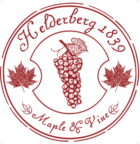Frequently Asked Questions
Why Maple?
- It is 100% natural and unrefined.
- It retains the inherent nutritional value of the sap obtained from the maple tree and is an excellent source of vitamins and minerals, having a higher nutritional value than all other common sweeteners. In fact, it has more than 100% of required daily allowance of manganese, 37% of riboflavin, and 18% of zinc.
- It contains no additives and has one of the lowest calorie counts of the common sweeteners.
- It contains up to 24 different antioxidants that are beneficial to fighting free radicals, reducing inflammation and fighting diseases. In fact, 4 tablespoons of maple syrup has the same antioxidant value as broccoli.
- It has a lower glycemic index than many other common sweeteners.
To make maple syrup, sap must be collected from the maple trees.
Once the sap is gathered, maple syrup is made simply by removing water from sap by boiling it to concentrate the natural sugars and nutrients made by the tree. The sap is boiled until it reaches a sugar concentration of about 66 percent at a temperature of around 219°F. It takes approximately 40 gallons of sap to produce just one gallon of pure maple syrup!
The amount of sap produced be each tree is dependent on several factors, including weather conditions and the size, age, and health of the tree. It takes at least forty years for a maple tree to grow big enough to tap in order to collect the sap. On average, a tree will produce 10 to 20 gallons of sap in a season.
Maple sap flows in the late winter or early springtime, when the days are warm and the nights are frosty.
Maple syrup is very dependent on Mother Nature. The season for sap flow can be as short as two weeks or as long as two months, but on average is between 4-6 weeks. Once the trees begin to bud, the season is officially over.
Maple syrup is only made in the region of North America ranging from southeastern Canada to Pennsylvania and from the East Coast to Wisconsin. New York State is the second largest maple producing state and home to the largest resource of tappable maple trees in the United States. As an abundant and sustainable resource, New York State’s maple industry continues to grow.
Grading refers to the intensity of the flavor in the syrup. In general, lighter syrups are produced early in the season and the syrup become darker as the season progresses. In New York State, the following standards are used:
- Grade A golden color and delicate taste maple syrup has a uniform light golden color and delicate to mild taste.
- Grade A amber color and rich taste maple syrup has a uniform amber color and a rich or full-bodied taste.
- Grade A dark color and robust taste maple syrup has a uniform dark color and a robust or strong taste.
- Grade A very dark and strong taste maple syrup has a uniform very dark color and a very strong taste.
Nutritional Facts on Maple


